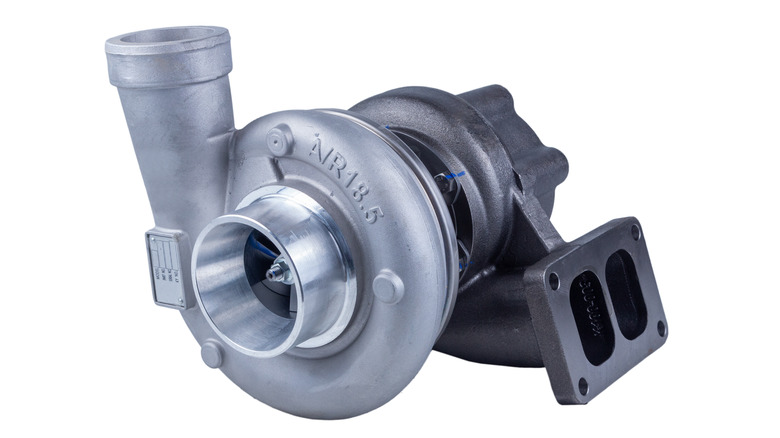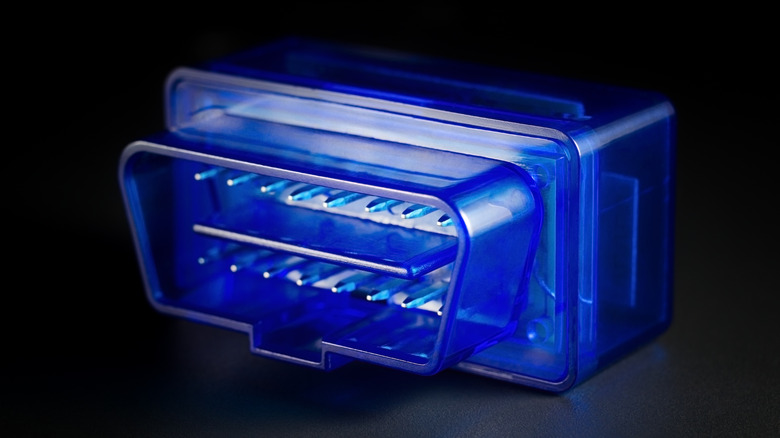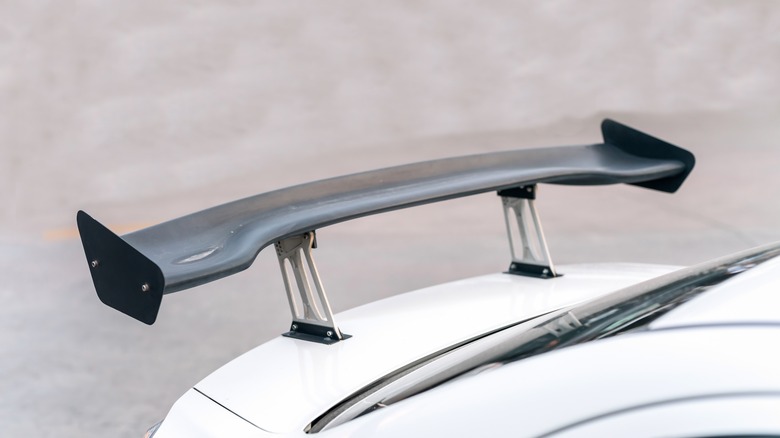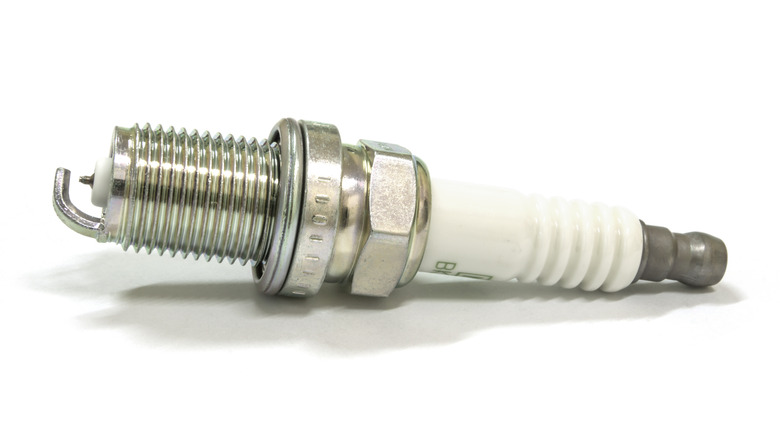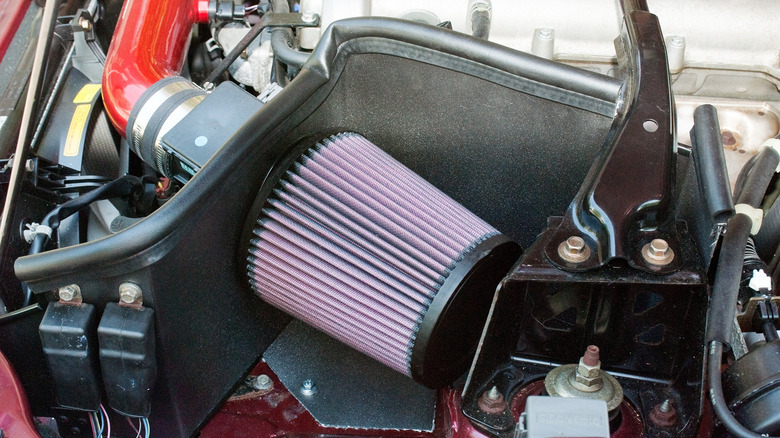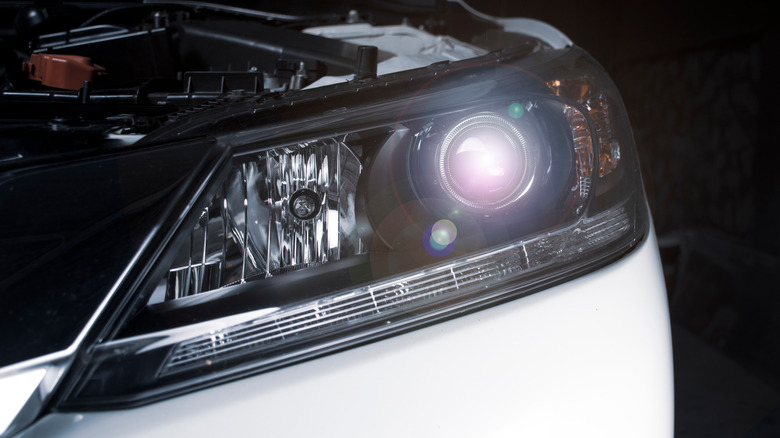Car Tech That Is A Total Waste Of Money
Cars provide endless opportunities for owners to part with vast sums of money. Some people hang fuzzy dice from their mirror, while others adorn their ride with tacky plastic hood scoops and curb feelers. Others take deeper dives, and ramp up the power output. It can be easy to dump a couple of thousand dollars into a car to make it look better, sound better, or drive better. We are also spoiled for choice when it comes to modern technology, with everything from sophisticated electronics to high-performance engine mods available.
But are all these things worth it? Depending on what the goal is, they may well be. Then again, some products are put on the market by unscrupulous vendors seeking to make a buck from uninformed consumers. It can be hard to make decisions on where to spend your hard-earned cash. Here are some car tech products that are a total waste of money.
Electric Turbochargers
Turbocharging has been one of the biggest developments in the auto industry over the last couple of decades. Turbos are commonplace as a way of boosting fuel economy while maintaining adequate power levels for cars and trucks of all sizes (via MotorTrend). They have also long been the go-to add-on for creating performance; they are a reasonably affordable means of increasing power without making major modifications to the internals of the engine.
They are reasonably affordable, which is not exactly the same as affordable. Good turbochargers can cost hundreds, if not thousands of dollars, and the additional parts and labor for installation can cost hundreds more. It is still cheaper than replacing or rebuilding an engine with high-performance parts, but is not necessarily a cheap alternative.
However, finding cheap turbo alternatives is easy. Electric turbos have been popping up online, purporting to boost air intake through an electric fan wired into the car's 12-volt system. These are a waste of money. Jalopnik spelled out the details, explaining that new technology from automakers like Ferrari and Mercedes is coming for cars to use electric turbos. However, those are powered by massively powerful 48-volt systems, and no 12-volt fan could ever produce enough force to increase power in your engine. They are a waste.
Tornado Fuel Saver
Modifying engines may not always be for performance, as fuel economy is a huge concern for most drivers. Much of the advancement in engine technology over the last half-century has been done to create more efficient engines. Developments such as fuel injection, turbocharging, and variable valve timing have increased power and efficiency at the same time. Many classic car builders are replacing carburetors on old vehicles with new aftermarket fuel injection systems for performance and economy increases. Many new products can help get more miles per gallon. The Tornado Fuel Saver and similar devices are not among these products.
The idea behind these devices suggests that by installing something that looks a bit like elongated fan blades inside the intake of the engine, the airflow will be affected in such a manner that it will flow more efficiently into the engine. They have no moving parts, and no mechanical elements involved. Consumer Reports tested some of these devices, and saw no increase in power or economy. A test on a Beetle resulted in slightly worse performance. With prices over $80 for some of these types of products, it seems their promises of improvements in fuel mileage should be criminal. It would be less hassle to take $80, and place it directly in the toilet.
EcoTune Fuel Saver
Modern cars benefit substantially from the computer age. Microprocessors can meter and control combustion precisely, leaving us with more powerful, more efficient, and cleaner burning engines. These are all net positives for owners and the environment. Manufacturers spend billions on research and development to create the systems that keep our cars going, but that doesn't prevent some inventive upstarts from attempting to build upon their expertise. The EcoTune Fuel Saver is a perfect example.
Based on adverts for the EcoTune, one can simply plug this into the OBDII port, and watch the fuel economy soar. The ads claim the device will improve performance by "remapping the ECU, adjusting the boost pressure, injection timings, and fuel injection."
Tire Meets Road dug into this issue, investigating the claims, and found the devices to be good at one thing: flashing an LED light. Looking at the circuitry in the device reveals no communications hardware, nor connections to the car's ECU itself. The only connections were to 12-volt power to flash the LED. These things are a pure scam, and their ability to market them should be revoked. If you truly want to save fuel, there are better suggestions that cost you nothing.
Rear Spoilers
Rear spoilers are a staple of race cars, serving a valid function in the pursuit of better handling and grip. The wind flowing over them works in the opposite manner of a wing, causing the spoiler to exert pressure downward to keep the rear tires more firmly planted on the road. They are also ubiquitous on sports cars and high-performance sedans. Properly engineered spoilers have a genuine function, such as the huge one on the back of the McLaren Senna. But, not all spoilers are created equal.
The spoilers on race cars and McLarens are much different from the spoiler on your Accord. They are rigorously tested and precision-crafted to functionality. Many other manufacturers may put forth a similar effort into designing the spoiler on some of their highest-performing sports cars, but most of them are purely aesthetic.
Furthermore, dozens of aftermarket manufacturers produce spoilers for what seems like nearly every other model of car on the planet. However, The Globe and Mail looked into the issue and found that most spoilers have little effect. For speeds under 60 mph, most spoilers do nothing, even on fast cars. Furthermore, improperly installed spoilers create way more drag than downforce. Therefore, with a few specific exceptions, your spoiler may be a waste of money. It still probably looks cool.
Performance Spark Plugs
Without spark plugs, we would have no gasoline engines at all. They are the component that sets the fuel ablaze, turning liquid fuel into energy. The technology of spark plugs has come a long way over the last 120 years. At one time not long ago, sparks plugs regularly wore out, and required regular replacement. Today's vehicles recommend changing spark plugs at intervals of 100,000 miles or more (via Jiffy Lube).
The spark plug today is not much different from the one used by Karl Benz in his Motorwagen in 1885. The form, construction, and parts of the plug have remained consistent through the decades, but the materials have changed drastically. Advancements in metallurgy, allowing manufacturers to switch from using nickel to platinum, iridium, and, most recently, ruthenium, have spurred dramatic improvements in the durability and performance of modern plugs (via Tomorrow's Technician).
Despite the significant improvements in spark plugs, they still come with many options, price levels, and performance grades. But are the top-tier plugs worth it? According to MotorBiscuit, the newer plugs help primarily in extending longevity. Modern cars' computer systems optimize performance through a variety of means. As such, fancier plugs likely will not make any difference except for engines of extremely high performance, like those found in ultra-expensive supercars and racing engines. Unless you drive a McLaren, it is probably a waste of money.
Short-Ram and Cold-Air Intakes
First, it is important to distinguish between a short-ram intake (SRI), and a cold-air intake (CAI). They are similar in that they funnel air into the engine, but a CAI generally sources the air from outside the engine bay while the SRI brings air to the engine bay in the shortest route possible (via CarThrottle). A CAI can be beneficial in ways the SRI is not. Regardless, modern cars are computer designed, and extensively tested for maximum efficiency already. Also, modifying the engine may run afoul of state and federal regulations. It seems dubious an aftermarket parts manufacturer could do better than a giant global corporation, except for some advanced engineering firms.
CarThrottle detailed the differences in these intakes and the performance advantages. The results do show performance increases from both. The test compares throttle response, and the results show that the gains over a range of revolutions per minute barely exceed 3%. The CAI did perform better overall, but neither of them showed significant gains. Considering these intakes can cost hundreds of dollars, the most substantial change in your engine may be the noise it makes. If noise is what you want, then they may be a decent investment — but if you are looking for good power gains, these may be a waste of cash.
Ground Effects
Body parts added to make a car hug the ground and improve traction are commonly called ground effects. Some of these parts are found on race cars, and serve a crucial purpose in keeping cars on the track, especially at high speed (via One Stop Racing). These parts are precisely engineered, and a great deal of research and development goes into making sure they can withstand the extreme forces experienced during a race. This technology is also prevalent in passenger cars, and can be found on many sports cars and high-performance trim levels of more mainstream models. Furthermore, ground effects such as front air dams, splitters, and so-called "body kits" can be ordered and installed on an array of cars from nearly all makes. But are they worth it?
For true high-performance cars engineered by manufacturers that employ advanced computer-aided design and wind tunnel testing, spoilers most likely have a positive impact on the driving experience. The aftermarket fiberglass and polyurethane may not have the same outcome. Relatively cheap body kits added to popular cars such as the Volkswagen Golf are likely to do nothing more than make the car low to the ground, causing speed bumps to be a road hazard, and scraping curbs and driveways commonplace. Some of them look cool, but most are just not worth it.
HID Headlights
This may be a bit controversial, but it is included for a reason. HID, or high-intensity discharge, headlights started appearing on cars in the '90s. HID bulbs use an electrical charge through xenon gas to create light (via Auto Express). They are powerful, and it is bright. There are also plenty of listings on site such as Amazon and eBay that offer aftermarket upgrades and replacements to retrofit older cars with HID technology. Some newer cars are also equipped with LED headlights that are more efficient than xenon, and use less energy. Are they really better?
Consumer Reports put this question to the test to see which options produced the most light, which is measured in lumens. The test involved several cars and took into account not just the type of lighting equipment, but the overall design and how brightly they lit the road. Among the top 10, five of the cars on the list had halogen low-beam lights, and eight of the cars had halogen high beams. So, while the HID lights produce a really neat-looking bright light, the standard halogen may be doing just as good a job of illuminating what is ahead.
Fuel Line Magnets
Among the many products with wild claims of helping you save fuel are fuel line magnets. These are "miracle" products that attach to your vehicle's fuel line without having to disassemble any part of the fuel system, and require no complex installation. The claim is that they can use just magnets to reorganize the fuel molecules such that it "breaks apart fuel molecules so gas burns more efficiently," according to Popular Mechanics.
The magazine found out by using dyno testing to measure horsepower, and the surprise result is that there was no change in horsepower, and no better fuel economy. Fuel has no magnetic properties, so the molecules cannot be affected by magnets. Furthermore, fuel lines are metal, so the magnetic forces would only fall along the metal lines. These are a complete waste of money, and work no better than snake oil sold by Victorian-era charlatans.
Deer Whistles
Look around a parking lot at a Walmart in most rural areas, and you are bound to find several small horn-shaped objects mounted to the front bumpers of cars. They are not wired into the electrical system, and most likely are only held on with adhesive. These are whistles that use rushing air from the speed of the car to produce a high-pitched sound that is inaudible to humans. They are popular in rural areas for drivers to help avoid running into the odd deer appearing in their headlights on a dark country road.
Deer impacts are a genuine problem and cause fantastic amounts of damage, totaling cars with a distinct possibility of injuring the passengers. The whistles are supposed to alert deer of your upcoming presence, and hopefully scare them away with the noise. KSHB of Kansas City reported that one in six crashes in the state of Kansas involved a deer in 2018.
KSHB also looked into the effectiveness of deer whistles via interview with an animal audiologist, Dr. Peter Scheifele of the University of Cincinnati. Scheifele took part in a 2003 study that found that the effectiveness of deer whistles is overstated, even though many people swear by them. The biggest problem is that by the time a deer might hear a whistle, there would be no time for it to move, even if it had the notion that danger was imminent. While these small devices rarely cost more than $20, it is still probably better spent on lottery tickets.

